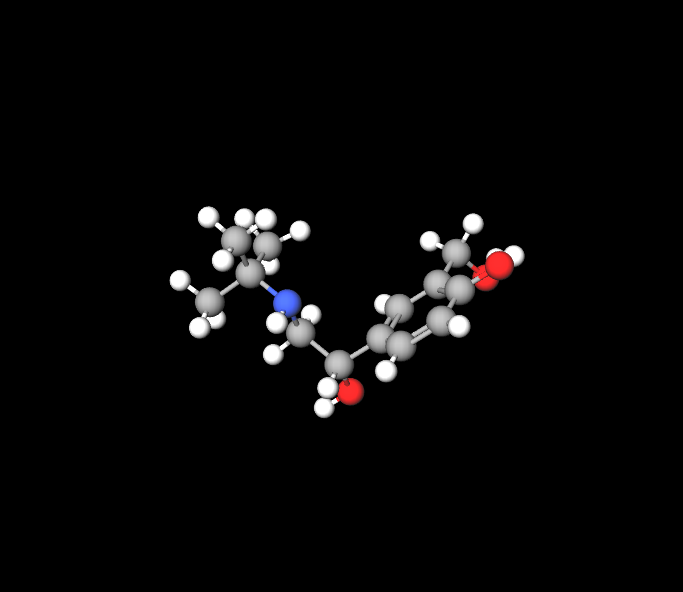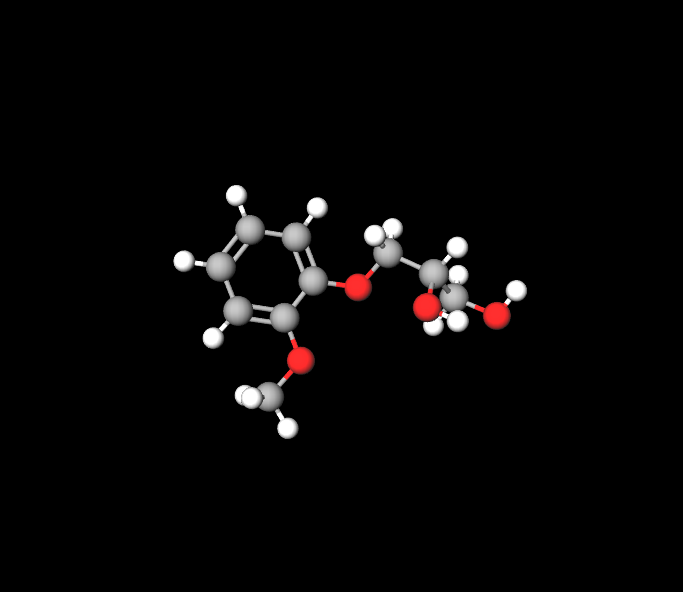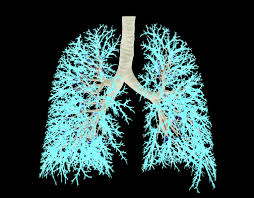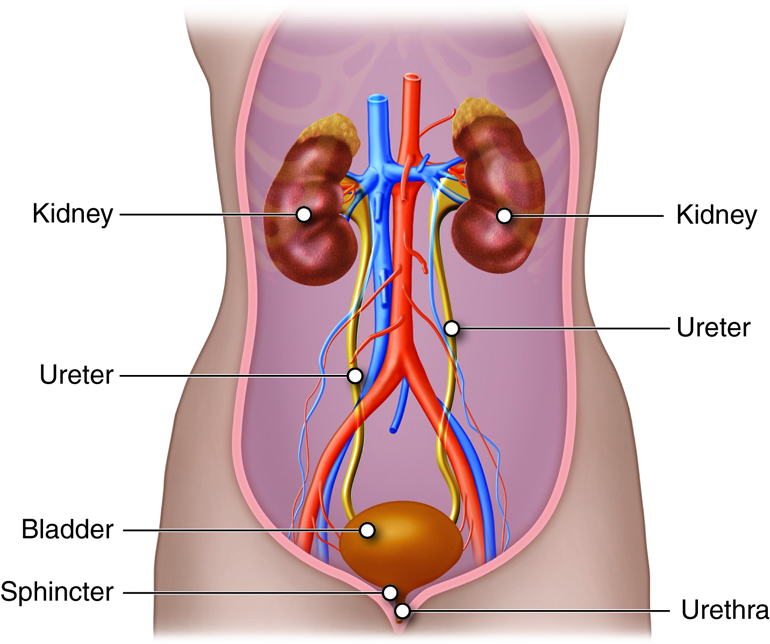Ventorlin EXP Syrup
- Introduction to Ventorlin EXP Syrup
- Composition of Ventorlin EXP Syrup
- Uses of Ventorlin EXP Syrup
- How Ventorlin EXP Syrup Works
- Salbutamol Dosage and Administration of Ventorlin EXP Syrup
- Side Effects of Ventorlin EXP Syrup
- Warnings and Precautions with Ventorlin EXP Syrup
- Contraindications for Ventorlin EXP Syrup
- Important Precautions with Ventorlin EXP Syrup
- Interaction of Ventorlin EXP Syrup with Other Medications
- Administration of Ventorlin EXP Syrup to Special Populations
- Overdosage of Ventorlin EXP Syrup
- Storage Guidelines for Ventorlin EXP Syrup
- Handling Precautions for Ventorlin EXP Syrup
Introduction to Ventorlin EXP Syrup
Overview of Ventorlin EXP Syrup
Ventorlin EXP Syrup is a bronchodilator used to ease breathing difficulties linked to conditions like asthma and chronic obstructive pulmonary disease (COPD). This syrup quickly provides relief by relaxing the muscles in the airways and helping patients breathe easily.
Therapeutic Category and Classification
Ventorlin EXP Syrup is classified under beta-agonists and bronchodilators. It is part of a therapeutic category focused on respiratory support. It works as a selective beta-2 adrenergic receptor agonist, allowing targeted relief in conditions where airway constriction is prevalent.
Key Benefits and Indications
- Immediate relief from bronchospasms
- Assists in long-term asthma management
- Reduces symptoms in COPD patients
Ventorlin EXP Syrup is essential in managing acute respiratory distress, making it invaluable for both asthma and COPD treatment plans.
Importance of Consulting Healthcare Professionals
Professional guidance ensures correct dosage and proper use, mainly due to potential side effects and contraindications. Consulting a healthcare provider helps maximize the therapeutic benefits while minimizing risks associated with misuse.
Composition of Ventorlin EXP Syrup
Active Ingredients and Their Roles
Ventorlin EXP Syrup contains Salbutamol, an active ingredient that functions as a beta-2 adrenergic agonist. Salbutamol relaxes bronchial smooth muscles, facilitating unobstructed airflow and respiratory relief. Guaifenesin is used to help clear mucus or phlegm from the chest when you have congestion from a cold or flu.


Inactive Ingredients and Formulation Details
Inactive ingredients include flavoring agents, stabilizers, and preservatives. These enhance taste and prolong shelf life without altering efficacy. These components are carefully selected to support patient compliance, especially for long-term therapy.
Available Strengths and Flavors
The syrup is typically available in varying concentrations to cater to diverse patient needs, along with flavors that make it more palatable for children and adults.
Quality Standards and Manufacturing Process
Manufactured under strict regulatory guidelines, Ventorlin EXP Syrup adheres to quality standards that ensure patient safety and product efficacy. Each batch undergoes rigorous testing before distribution.
Salbutamol vs albuterol
Albuterol is the brand name for salbutamol, which the U.S. Food and Drug Administration (FDA) has approved. It's used to manage and prevent acute or severe bronchospasms in individuals with airway conditions, like exercise-induced bronchospasm.
Ventolin vs salbutamol
Ventolin is a brand name for the drug salbutamol, which is used to treat asthma and chronic obstructive pulmonary disease (COPD)
Guaifenesin and dextromethorphan
A mix of dextromethorphan and guaifenesin is a blend of medications used to alleviate coughing and chest congestion resulting from allergies or the common cold. Dextromethorphan serves as a cough suppressant while guaifenesin acts, as an expectorant, by helping to loosen mucus in the chest and throat.
Acetaminophen guaifenesin phenylephrine
Acetaminophen guaifenesin phenylephrine combines a pain reliever with an expectorant and a decongestant to help with symptoms like fever and congestion caused by a cold or the flu.
Guaifenesin and codeine
Codeine is a type of cough medicine that acts as a suppressant, for coughs by impacting the brain signals, for triggering the cough reflex. Guaifenesin serves as an expectorant that aids in loosening congestion in your chest and throat to facilitate elimination through coughs.
Uses of Ventorlin EXP Syrup
Primary Indications for Ventorlin EXP Syrup
Primarily indicated for patients with obstructive airway conditions, Ventorlin EXP Syrup is a trusted choice for alleviating acute symptoms associated with asthma and COPD.
Management of Asthma Symptoms
Relief from Bronchospasms in Chronic Obstructive Pulmonary Disease (COPD)
Ventorlin EXP Syrup reduces the frequency and severity of bronchospasms in COPD patients, improving their quality of life.
Treatment of Other Respiratory Conditions with Bronchospasm
Off-Label Uses of Ventorlin EXP Syrup
Potential Uses in Exercise-Induced Bronchospasm
Ventorlin EXP Syrup may be recommended to prevent or mitigate bronchospasms triggered by exercise, benefiting patients with exercise-induced asthma.
Alternative Applications in Respiratory Therapy as Prescribed by Specialists
In some cases, specialists may prescribe this syrup for off-label respiratory conditions, provided the patient's health profile allows.
How Ventorlin EXP Syrup Works
Mechanism of Action: Beta-Agonist and Bronchodilator Effects
Salbutamol activates beta-2 adrenergic receptors in the bronchial muscles, causing relaxation and widening of the airways, which enables easier airflow. Guaifenesin relaxes the smooth muscles in the bronchi.

Impact on Respiratory Muscles and Airflow
The syrup alleviates muscle constriction, directly enhancing oxygen intake and circulation within the lungs.
Duration of Effectiveness and Onset of Action
Onset is typically within minutes, with effects lasting up to 4-6 hours, making it a fast-acting solution for acute respiratory episodes.
Comparisons to Other Bronchodilators and Similar Medications
Unlike other bronchodilators, Ventorlin's selective action minimizes systemic side effects, providing focused relief with fewer adverse impacts on other bodily functions.
Salbutamol Dosage and Administration of Ventorlin EXP Syrup
Salbutamol dosage for adults
The usual adult dosage is based on the severity of symptoms and physician recommendations, typically ranging from 2-4 mg up to four times daily.
Adjusted Dosage for Children and Elderly
Children and elderly patients receive adjusted doses to account for metabolic differences and reduced tolerance levels, ensuring safety.
Salbutamol pediatric dose mg/kg
Oral: Use in children >2 years. 0.3-0.4 mg/kg/day PO in 3 divided doses; Maximum: 4 mg/dose. Aerosol inhaler: Upto 100-200 mcg single dose on demand.
Frequency and Timing of Doses
Consistent maintenance at recommended time intervals is crucial for lasting effectiveness. It should be adjusted based on personal requirements.
Instructions for Safe and Effective Use
- Use a measuring cup or syringe for accurate dosing
- Shake the bottle well before each use
Follow precise dosing instructions to prevent accidental overdose.

Recommendations for Missed Doses
If a dose is missed, take it as soon as possible. However, if it's close to the next dose, skip it. Avoid doubling doses.
Side Effects of Ventorlin EXP Syrup
Overview of Possible Side Effects
Potential side effects range from mild to severe, with the most common including headaches, tremors, and palpitations. Each individual's reaction varies based on dosage and personal sensitivity.
Differentiating Between Common and Rare Side Effects
- Common: Headaches, tremors, nausea
- Rare: Allergic reactions, cardiac arrhythmias

Possible Allergic Reactions
Severe allergic reactions are uncommon but possible, manifesting as rashes, difficulty breathing, or facial swelling. Immediate medical assistance is necessary in these cases.
Long-Term Side Effects with Prolonged Use
Chronic use may lead to tolerance, dependence, or adverse effects on heart health, emphasizing the need for regular medical evaluation.
Salbutamol weight loss
Salbutamol is a beta-2 agonist, which has the same effect on the adrenergic system as exercise. It results in weight loss, an increase in muscle mass, and a reduced appetite. It is rapidly excreted in urine, but tolerance usually develops within days.
Guaifenesin side effects sleep
it is reported that it is harder for them to sleep after intake of Guaifenesin, which is not a common side effect of this drug. If you experience this, you are advised to take the recommended dose in the morning and early afternoon.
Guaifenesin and blood pressure
Guaifenesin is typically considered safe for individuals with heart conditions as it doesn't tend to raise blood pressure levels. However, you should be cautious about taking too much of this medication, as it could affect your heart and lead to an increased heart rate. If you have a history of heart issues or are currently dealing with problems, it's best to take this drug under the guidance of a professional.

Duration and Self-Limiting Nature of Common Side Effects
Most side effects are temporary, often resolving within a few hours without intervention.
Managing Mild Side Effects at Home
If you experience symptoms of discomfort, try taking a break and staying hydrated. Also, it might be helpful to avoid consuming caffeine.
Warnings and Precautions with Ventorlin EXP Syrup
Specific Health Conditions Requiring Caution
Patients with cardiovascular diseases, diabetes, or thyroid disorders should use Ventorlin with caution, as it can exacerbate certain symptoms.
Risks Associated with Misuse and Overuse
Overuse can result in tolerance, reducing its effectiveness and necessitating higher doses, which increases the risk of side effects.
Guaifenesin pregnancy
Typically found in, over the counter medications is guaifenesin. An expectorant that seems to be considered safe for use during pregnancy except, for the initial trimester.
Guaifenesin breastfeeding
It's usually fine to use guaifenesin while breastfeeding without any concerns. This is particularly true for babies who're then 2 months.

Potential for Tolerance and Dependence
Regularly using something could result in its effectiveness decreasing over time and possibly causing reliance to develop.
Red Flags for Seeking Immediate Medical Attention
If symptoms such as chest pain, severe dizziness, or difficulty breathing occur, seek emergency medical help without delay.
Contraindications for Ventorlin EXP Syrup
Absolute Contraindications (Conditions Where Ventorlin Should Not Be Used)
Ventorlin EXP Syrup must not be administered to individuals with a known hypersensitivity to Salbutamol or any of its components, as this could trigger severe allergic reactions. Additionally, it is contraindicated in patients with certain cardiac conditions, such as severe hypertension or unstable arrhythmias, due to the potential for exacerbating these conditions.

Relative Contraindications (Conditions Requiring Careful Evaluation)
Patients, with diabetes or hyperthyroidism or those with a history of seizures should seek advice from healthcare providers before using Ventorlin EXP Syrup due to interactions, between their health conditions and the medications active components that could result in worsened side effects or reduced effectiveness.
Drug Interactions That May Result in Contraindications
Drug interactions can make Ventorlin inappropriate for some users. Combining this syrup with non-selective beta-blockers, such as propranolol, can negate its therapeutic effects. Additionally, co-administration with certain diuretics may lead to hypokalemia, thus requiring close monitoring or avoidance.
Important Precautions with Ventorlin EXP Syrup
Avoiding Specific Foods, Drinks, or Activities
It's best to limit caffeine consumption because it can enhance the stimulating effects of Ventorlin and result in a heart rate and feelings of restlessness.
Guaifenesin and alcohol
Avoiding alcohol is also recommended since it can worsen feelings of dizziness or nausea linked to the syrup.
Managing Asthma Triggers While Using Ventorlin EXP
Ventorlin can assist in controlling asthma symptoms; however, to effectively manage the condition, patients must steer clear of triggers like smoke, pollen, and strong scents. In addition to medication, measures in the environment and diet can greatly improve symptom control.
Precautions for Patients with Cardiovascular Conditions
Patients who have heart issues should be cautious when using Ventorlin EXP Syrup due to the drug's effects, which could potentially cause rapid heart rate and increased blood pressure levels at times, requiring regular checks on heart health and possible adjustments in other cardiovascular drugs if needed.
Monitoring Response and Adjusting Dosage with Medical Advice
Periodic evaluation by healthcare professionals ensures that the dosage aligns with the patient's response. Monitoring also helps identify any tolerance or side effects, allowing for timely dosage adjustments.
Interaction of Ventorlin EXP Syrup with Other Medications
Potential Drug Interactions and Their Effects
Ventorlin EXP Syrup may interact with various medications, which could alter its effectiveness or increase side effects. Such interactions are particularly notable with other respiratory drugs and blood pressure medications.
Interaction with Other Bronchodilators and Respiratory Drugs
Combining Ventorlin with other bronchodilators, such as anticholinergics, may enhance therapeutic effects. However, simultaneous use should be monitored closely to avoid overstimulation of the respiratory system.
Effect of Ventorlin on Blood Pressure Medications
Ventorlin's beta-agonist activity may interfere with beta-blockers, commonly prescribed for hypertension. This interaction could reduce the efficacy of both medications, thus requiring close supervision and possible dosage adjustments.
Recommendations for Avoiding Adverse Interactions
Patients are advised to disclose all current medications to their healthcare provider. Avoiding self-medication with additional bronchodilators or similar drugs helps prevent unwanted interactions.
Administration of Ventorlin EXP Syrup to Special Populations
Administration to the Elderly
Dosage Considerations and Precautions
The elderly may be more susceptible to Ventorlin's effects. Lower dosages are often recommended to minimize side effects like tremors or increased heart rate.
Adjustments Based on Renal and Hepatic Function
As people age, careful monitoring of kidney and liver function is important to prevent the buildup of medication; it's recommended to check how well the kidneys and liver are functioning.

Monitoring Elderly Patients for Increased Side Effects
Due to potential sensitivity, elderly patients should be monitored for any pronounced side effects, especially cardiac symptoms, and dosage should be modified as necessary.
Administration to Pregnant Women and Nursing Mothers
Safety Profile in Pregnancy and Breastfeeding
Ventorlin EXP Syrup should only be used during pregnancy if absolutely necessary. Limited data suggests minimal risk, but caution is still warranted.
Risks vs. Benefits Assessment
Careful consideration of the potential benefits against any risks to fetal development is essential. Healthcare providers may suggest alternative treatments if the risk profile is concerning.
Impact on Fetal and Neonatal Health
Although the risk to neonates is low, prolonged exposure may affect fetal heart rate. Regular prenatal monitoring is advised if Ventorlin is prescribed during pregnancy.
Administration to Children
Age-Appropriate Dosage and Safety Measures
Dosages are typically adjusted for children based on age and weight to ensure efficacy without increasing side effects.
Potential for Side Effects in Pediatric Use
Children may experience side effects such as tremors or mild nausea. Monitoring these effects can help in managing the appropriate therapeutic response.
Recommendations for Monitoring Children During Treatment
Close supervision by caregivers and healthcare providers ensures any adverse reactions are promptly addressed. Regular check-ins are recommended to assess treatment efficacy.
Overdosage of Ventorlin EXP Syrup
Symptoms and Signs of Overdose
Overdosage may lead to symptoms such as dizziness, tremors, and rapid heart rate. Severe cases might present with chest pain, nausea, or fainting.
Guaifenesin overdose
Signs of taking much may involve being unsure about things happening around you or feeling disoriented; having chilly and damp skin; experiencing an irregular heart rate; breathing slowly and shallowly; having seizures; or falling into a coma.
Emergency Treatment Procedures
In cases of overdose, immediate medical intervention is crucial. Activated charcoal may be used, and symptomatic treatment is provided based on the patient's specific symptoms.
Potential Complications of Overdose
Complications can include electrolyte imbalances, cardiovascular disturbances, and increased risk of seizures, underscoring the importance of adhering to prescribed dosages.
Prevention Tips and Safe Usage Practices
To avoid accidental overdose, follow dosing instructions carefully, use measuring tools, and store the syrup out of reach of children. Do not double doses if a dose is missed.
Storage Guidelines for Ventorlin EXP Syrup
Optimal Temperature and Humidity Conditions
Store Ventorlin EXP Syrup at room temperature, away from excess heat and moisture. Proper storage helps maintain the potency and stability of the medication.
Guidelines for Maintaining Potency
Exposure to sunlight or high humidity should be avoided, as these conditions may degrade the active ingredients, reducing effectiveness.
Shelf Life and Expiry Information
The syrup has a specific shelf life, as indicated on the packaging. Using the medication beyond its expiry date can reduce its effectiveness or potentially pose risks.
Proper Disposal of Expired or Unused Syrup
Dispose of expired syrup according to local pharmaceutical disposal guidelines to prevent accidental ingestion by others or environmental contamination.
Handling Precautions for Ventorlin EXP Syrup
Safe Handling and Transportation
When transporting Ventorlin EXP Syrup, ensure the bottle remains upright and secure to avoid spills. This is especially important for travel.
Avoiding Contamination During Use
Prevent contamination by using a clean measuring device and avoiding direct contact with the bottle's opening. Keeping it capped tightly prevents airborne contamination.
Tips for Caregivers Handling the Medication
Caregivers should wash their hands before and after administering the syrup. For those with sensitive skin or allergies, wearing gloves may be advisable.
Instructions for Measuring Doses Accurately
Use a calibrated measuring spoon or syringe for precise dosing. Household spoons may lead to inaccurate doses, which could affect therapeutic outcomes.
Ventorlin EXP Syrup FAQ
- What salbutamol does?
- What salbutamol used for?
- How salbutamol reduce potassium?
- How salbutamol causes tachycardia?
- How salbutamol works in asthma?
- How salbutamol inhaler works?
- How salbutamol causes hypokalemia?
- How salbutamol works?
- Can salbutamol prevent miscarriage?
- Can salbutamol cause tachycardia?
- Can salbutamol cure cough?
- Are salbutamol and salmeterol the same?
- Are salbutamol and ventolin the same?
- Why salbutamol is given in asthma?
- Why salbutamol is given in hyperkalemia?
- Why salbutamol cause palpitations?
- Why salbutamol causes hypokalemia?
- Where is salbutamol absorbed?
- Where is salbutamol metabolised?
- Where does salbutamol bind?
- Will guaifenesin keep you awake?
- Will guaifenesin help with sinus congestion?
- Will guaifenesin make you cough?
- Will guaifenesin make me sleepy?
- Why is guaifenesin combined with dextromethorphan?
- Why take guaifenesin?
- Who cannot take guaifenesin?
- Which is better guaifenesin vs carbocisteine?
- Guaifenesin when breastfeeding?
- Guaifenesin what does it do?
- What guaifenesin do?
- What guaifenesin does?
- How guaifenesin / phenylephrine works?
- How guaifenesin works?
- Can guaifenesin cause constipation?
- Can guaifenesin cause diarrhea?
- Are guaifenesin and mucinex the same?
What salbutamol does?
Salbutamol is commonly prescribed to ease asthma and chronic obstructive pulmonary disease (COPD) symptoms, such as coughing, wheezing, and shortness of breath.
What salbutamol used for?
It is commonly employed to help alleviate wheeziness or coughs, chest constriction, and shortness of breath in individuals suffering from asthma and chronic obstructive pulmonary disease (including bronchitis and emphysema).
How salbutamol reduce potassium?
Administered through a metered dose inhaler (MDI-S), a dose of 1,200 μ g
How salbutamol causes tachycardia?
It boosts the creation of cyclic adenosine monophosphate (cAMP), increasing the connection between calcium and the cell membrane.
How salbutamol works in asthma?
Salbutamol is a bronchodilation agent, a class of medications that helps relax the muscles surrounding the air passages in the lungs to aid in breathing.
How salbutamol inhaler works?
Salbutamol belongs to a category of medication known as bronchodilation agents. These agents help to relax the muscles in the airways of the lungs to facilitate breathing.
How salbutamol causes hypokalemia?
Salbutamol can also lead to increased blood sugar levels and lower potassium levels in the body. These outcomes result from ß₂ receptor stimulation that triggers the Na⁺/ K⁺ ATPase, which facilitates the movement of potassium into the cells.
How salbutamol works?
It calms the muscles in the air passages leading to the lungs, making breathing easier.
Can salbutamol prevent miscarriage?
During this phase of pregnancy, medicine helps to ease the muscles in the uterus and prevent contractions associated with labor.
Can salbutamol cause tachycardia?
Upon inhaling salbutamol through the nebulization treatment method, the heart rate increased at the 15-minute mark (with a p value of less than 0 .00001). Even a small dose of salbutamol administered via nebulization could cause a spike in heart rate when contrasted with the administration of saline in individuals without health complications.
Can salbutamol cure cough?
Salbutamol is commonly prescribed to alleviate asthma and chronic obstructive pulmonary disease (known as COP‑). It helps ease symptoms like coughing and wheezing while improving breathing difficulties.
Are salbutamol and salmeterol the same?
Salmeterol is well received at a dose of 50 micrograms and shows greater efficacy than salbutamol at 200 micrograms four times daily.
Are salbutamol and ventolin the same?
You might recognize it as your asthma inhaler or by the trademark name Ventolin.
Why salbutamol is given in asthma?
Salbutamol is a bronchodilator that helps relax the muscles in the lungs' airways to make breathing easier.
Why salbutamol is given in hyperkalemia?
Salbutamol directly stimulates the beta receptors in the pancreas, leading to a rise in insulin production.
Why salbutamol cause palpitations?
Salbutamol may lead to palpitations as it can raise the heart rate and impact blood pressure.
Why salbutamol causes hypokalemia?
Salbutamol may also lead to blood sugar and potassium levels in the body. These responses are a result of the stimulation of ß ₂ receptors, which trigger the Na⁺/ K⁺ ATPase activity and facilitate the movement of potassium into cells.
Where is salbutamol absorbed?
Salbutamol is taken in by the lungs and the gastrointestinal tract (GIT).
Where is salbutamol metabolised?
Liver
Where does salbutamol bind?
Salbutamol attaches to the beta 1 receptors located on the bronchiole's smooth muscles.
Will guaifenesin keep you awake?
Generally speaking, Guaifenesin doesn't typically cause sleep disturbances; however, some individuals may find it a bit challenging to fall asleep after taking it, but this isn't a common side effect of the medication. If you happen to face this issue, it's suggested that you take the recommended dosage during the morning and early afternoon hours.
Will guaifenesin help with sinus congestion?
It has been demonstrated to be useful for relieving chest congestion and cough and for alleviating symptoms of nasal congestion.
Will guaifenesin make you cough?
Taking guaifenesin will not cause persistent coughing. However, it can help make your cough more productive by triggering the release of phlegm or mucus.
Will guaifenesin make me sleepy?
Yes
Why is guaifenesin combined with dextromethorphan?
Some medicines combine guaifenesin and dextromethorphan to address cough and chest congestion since they target symptoms differently.
Why take guaifenesin?
When you have a cold or flu, guaifenesin is used to assist in clearing mucus or phlegm from the chest, aiding with congestion relief.
Who cannot take guaifenesin?
Please do not administer wood extract to children and toddlers under two unless specifically instructed by your physician.
Which is better guaifenesin vs carbocisteine?
Carbocisteine is a medication that assists in expelling phlegm by reducing its thickness and stickiness in the body. Guaifenesin liquids are commonly used to alleviate cough and congestion resulting from conditions such as colds, bronchitis, and other respiratory ailments.
Guaifenesin when breastfeeding?
It's unlikely for guaifenesin to have any effects on a nursing child.
Guaifenesin what does it do?
You can take Guaifenesin to help remove mucus or phlegmy from your chest when you're congested due to an influenza virus.
What guaifenesin do?
Expectorants, like Guaifenesin belong to a group of medications that help thin the mucus in the airways making it easier to cough up and clear the air passages.
What guaifenesin does?
Using Guaifenesin can aid in clearing out mucus or phlegmy buildup in your chest when you are dealing with congestion due to a cold or the flu.
How guaifenesin / phenylephrine works?
Expectorant Guaifenesin functions by thinning and loosening mucus in the air passages to alleviate congestion and facilitate breathing; on the other hand, Phenylephrine operates as a decongestant by constricting the blood vessels in the nose to alleviate nasal congestion.
How guaifenesin works?
It operates by reducing the thickness of the mucus in the airways to facilitate cough-induced mucus expulsion, which aids in clearing the passages.
Can guaifenesin cause constipation?
When used as instructed, guaifenesin is generally considered safe for consumption, although it may result in side effects such as dizziness and constipation.
Can guaifenesin cause diarrhea?
Side effects on the system may manifest as feelings of nausea or vomiting accompanied by discomfort and diarrhea.
Are guaifenesin and mucinex the same?
Mucinex products contain guaifenesin as one of their ingredients.












